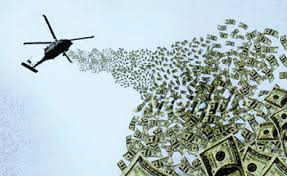
As President Obama wraps-up his second term, people are looking back to reassess his handling of the Great Recession. During his first year in office, our Disappointer-In-Chief introduced his own version of “trickle-down economics” by way of a bank bailout scheme called the Public-Private Investment Program (PPIP or “pee-pip”).
Despite his July 15, 2008, campaign promise that if he were elected, there would be “no more trickle-down economics”, the President and the Federal Reserve embarked on a course of bailing out the banks, rather than distressed businesses or the taxpayers themselves.
As this writer pointed out on Sept. 21, 2009, Australian economist Steve Keen published a report from his website explaining how the “money multiplier” myth, fed to Obama by the very people who facilitated the financial crisis, would be of no use in the effort to strengthen the economy.
On Aug. 26, 2016, the Bureau of Economic Analysis reported that real gross domestic product (GDP) increased at the annual rate of just 1.1% during the second quarter of 2016. This graph illustrates the faltering rate of annual GDP expansion since the end of 2014, after the conclusion of the Fed’s quantitative easing program.
Concerns that the United States could be doomed to a Japan-like addiction to monetary stimulus gimmicks have amped-up enthusiasm for the Fed to become more aggressive about raising interest rates. Meanwhile, many economists contend that tightening monetary policy before the economy reaches a robust state could plunge the nation back into recession.
In April 2016, former Federal Reserve Chairman Ben Bernanke advocated the use of “helicopter money” as a last-resort strategy to jump-start a stalled economy. This provoked a response from economist Steve Keen emphasizing that Bernanke and other mainstream economists have shared a flawed belief that the public’s expectations for a healthy rate of inflation could cause such inflation to occur. In other words: “Inflationary expectations cause inflation.”
Steve Keen consistently emphasizes the need to understand how excessive private debt causes severe economic contraction and financial crises. Specifically, when the level of private debt exceeds GDP by 150% and that level continues to grow – disaster awaits.
So what can be done to keep the debt-to-GDP ratio in check? In this video, Steve Keen and Edward Harrison of the Credit Writedowns website explain how Ben Bernanke’s helicopter could be sent on a debt reduction mission.